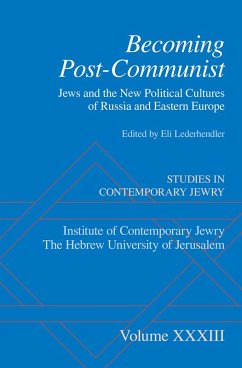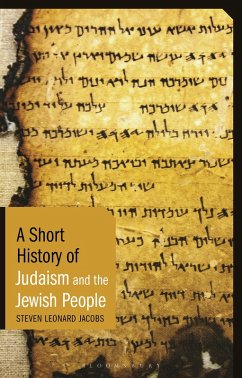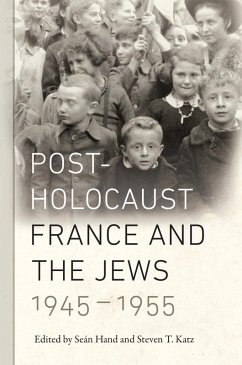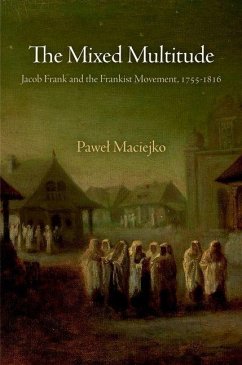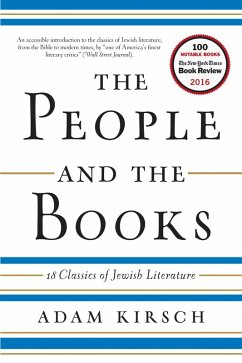
The Golden Age of the Lithuanian Yeshivas (eBook, ePUB)
Versandkostenfrei!
Sofort per Download lieferbar
44,93 €
inkl. MwSt.
Weitere Ausgaben:

PAYBACK Punkte
0 °P sammeln!
The Golden Age of the Lithuanian Yeshivas tells the story of the last chapter of Jewish rabbinical schools in Eastern Europe, from the eve of World War I to the outbreak of World War II.The Lithuanian yeshiva established a rigorous standard for religious education in the early 1800s that persisted for over a century and continues to this day. Although dramatically reduced and forced into exile in Russia and Ukraine during World War I, the yeshivas survived the war, with yeshiva heads and older students forming the nucleus of the institutions. These scholars rehabilitated the yeshivas in their...
The Golden Age of the Lithuanian Yeshivas tells the story of the last chapter of Jewish rabbinical schools in Eastern Europe, from the eve of World War I to the outbreak of World War II.
The Lithuanian yeshiva established a rigorous standard for religious education in the early 1800s that persisted for over a century and continues to this day. Although dramatically reduced and forced into exile in Russia and Ukraine during World War I, the yeshivas survived the war, with yeshiva heads and older students forming the nucleus of the institutions. These scholars rehabilitated the yeshivas in their original locations and quickly returned to their regular activities. Moreover, they soon began to expand into areas now empty of yeshivas in lands occupied by Hasidic populations in Poland and even into the lands that would soon become Israel.
During the economic depression of the 1930s, students struggled for food and their leaders journeyed abroad in search for funding, but their determination and commitment to the yeshiva system continued. Despite the material difficulties that prevailed in the yeshivas, there was consistently a full occupancy of students, most of them in their twenties. Young men from all over the free world joined these yeshivas, which were considered the best training programs for the religious professions and rabbinical ordination. The outbreak of World War II and the Soviet occupation of first eastern Poland and then Lithuania marked the beginning of the end of the Yeshivas, however, and the Holocaust ensured the final destruction of the venerable institution.
The Golden Age of the Lithuanian Yeshivas is the first book-length work on the modern history of the Lithuanian yeshivas published in English. Through exhaustive historical research of every yeshiva, Ben-Tsiyon Klibansky brings to light for the first time the stories, lives, and inner workings of this long-lost world.
The Lithuanian yeshiva established a rigorous standard for religious education in the early 1800s that persisted for over a century and continues to this day. Although dramatically reduced and forced into exile in Russia and Ukraine during World War I, the yeshivas survived the war, with yeshiva heads and older students forming the nucleus of the institutions. These scholars rehabilitated the yeshivas in their original locations and quickly returned to their regular activities. Moreover, they soon began to expand into areas now empty of yeshivas in lands occupied by Hasidic populations in Poland and even into the lands that would soon become Israel.
During the economic depression of the 1930s, students struggled for food and their leaders journeyed abroad in search for funding, but their determination and commitment to the yeshiva system continued. Despite the material difficulties that prevailed in the yeshivas, there was consistently a full occupancy of students, most of them in their twenties. Young men from all over the free world joined these yeshivas, which were considered the best training programs for the religious professions and rabbinical ordination. The outbreak of World War II and the Soviet occupation of first eastern Poland and then Lithuania marked the beginning of the end of the Yeshivas, however, and the Holocaust ensured the final destruction of the venerable institution.
The Golden Age of the Lithuanian Yeshivas is the first book-length work on the modern history of the Lithuanian yeshivas published in English. Through exhaustive historical research of every yeshiva, Ben-Tsiyon Klibansky brings to light for the first time the stories, lives, and inner workings of this long-lost world.




